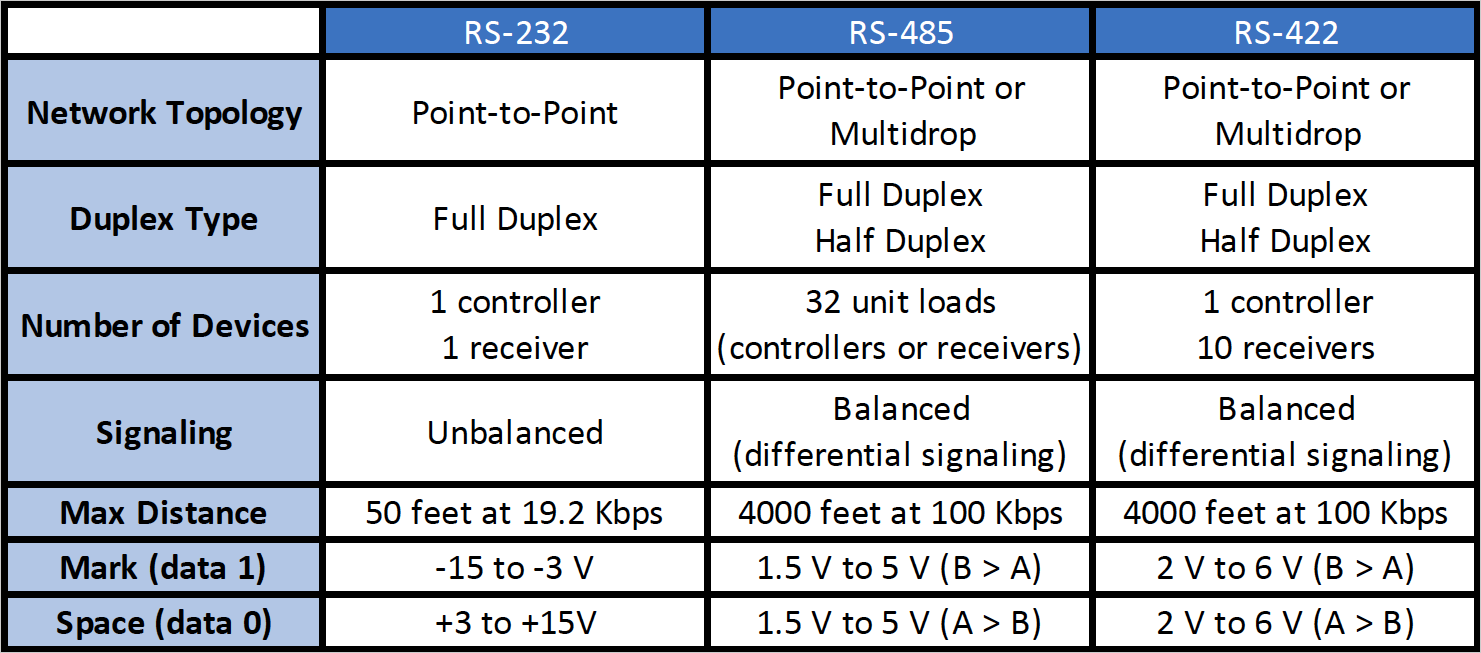Communicating with your calibration device is crucial, especially for a pressure transducer without a display. This communication is established through a variety of protocols in the industry.
Mensor’s pressure transducers are offered with serial communication standards such as RS-232 and RS-485. Understanding the differences between these two can be difficult, and it doesn't help that RS-422 is often confused with the RS-485.
To better understand these protocols, here’s an overview of all three:
RS-232
RS-232 is one of the most commonly used communication standards today. Until very recently, you could find RS-232 ports on most personal computers. Now, you are likely to see USB ports instead. Naturally, there are many RS-232 to USB adapters available.
This particular standard has a point-to-point method of communication, which means there is one controller (master) and one receiver (slave). In pressure transducer applications, it indicates that for each pressure transducer needed, one RS-232 port is needed. Another limitation of RS-232 is the maximum cable length, which is recommended to be 15 meters (50 feet).

RS-232 operates in a full duplex mode, meaning the controller and receiver can communicate at the same time without interference. Mensor transducers with RS-232 require three wires for set up: Transmit Data (TX), Receive Data (RX), and Signal Ground.
RS-485
In industrial environments, RS-485 is very popular because of its ability to communicate over long distances, its multidrop capability, and its immunity to noise. Multidrop means there can be multiple controlling devices with multiple receivers on a single bus. With RS-485, there can be at least 32 receivers (and up to 256 depending on the unit load) on one bus.
Like RS-232, there are many USB to RS-485 adapters available today, but the pinouts do vary from manufacturer to manufacturer. This is because there is no specified pinout by the standard, so it is important to check the pinouts of each device to ensure compatibility.
RS-485 is typically two-wire and half-duplex, but it can also be a four-wire with full-duplex. Mensor’s transducers are offered in four-wire with full-duplex. There are benefits and drawbacks to both configurations. Half-duplex is easier to setup because it has only two wires compared to four. On the other hand, half-duplex is more difficult to program. This is because only one device can communicate at once, so timing can become an issue. If two devices attempt to communicate at the same time, a data collision will occur.
Another benefit of full-duplex is it allows the controller to continue sending commands to the transducer if the transducer is in a continuous output mode. With a half-duplex setup, continuous output would clog the transmission lines, and not allow the controller to send commands reliably.
A four-wire device can be converted into a two-wire device, but this will void the full-duplex features. This can be done by connecting RX+ with TX+ (A with Y), and RX- with TX- (B with Z). This flexibility gives the user control over using either configuration.
RS-422
Although not very common, RS-422 is worth mentioning. RS-422 is the predecessor to RS-485, and the two are often a source of confusion.
RS-422 is similar to RS-485 because they both use differential signaling, communicate over long distances, and allow for multidrop. However, RS-422 multidrop allows for only one driver and a maximum of 10 receivers.
RS-422 is usually four-wire and full duplex. Because of this, it is common for RS-422 ports to be used to communicate with full-duplex RS-485 devices.
RS-485 has more or less replaced RS-422 as the serial multidrop standard in the industry.
Below is a table summarizing the key features of the three protocols:

All of Mensor’s digital pressure transducers support RS-232 and RS-485 standards to ensure seamless communication with the instruments.
Related Reading:



